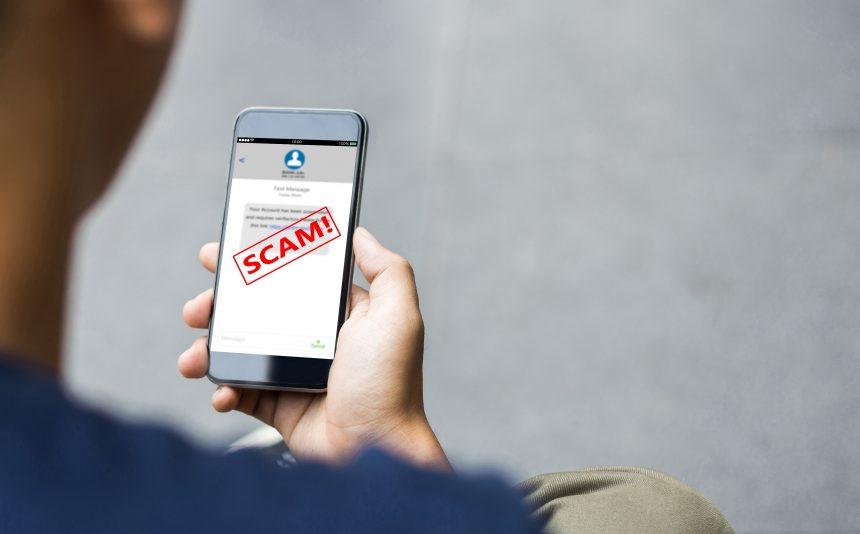In the digital age, where convenience often intersects with vulnerability, cyber threats continue to evolve, preying on unsuspecting individuals with cunning strategies. One such recent menace to emerge is the TollsInfoNYC scam, a sophisticated operation designed to deceive New York residents. This malicious scheme leverages the urgency and fear of fines to extract personal and financial information from its victims.
Understanding TollsInfoNYC: Unveiling the Scam
At first glance, TollsInfoNYC might appear to be a legitimate platform for managing and paying toll charges in New York. However, it is actually a fictitious entity meticulously crafted to serve as bait in a phishing scam. The scam initiates with unsolicited text messages to individuals, falsely notifying them of an outstanding toll fee and threatening additional fines if not promptly paid. These messages direct victims to a website, TollsInfoNYC.com, which ostensibly facilitates the payment of these non-existent toll charges.
Modus Operandi: How the Scam Operates
The TollsInfoNYC scam unfolds through a series of carefully orchestrated steps, each aimed at manipulating victims into divulging sensitive information and falling prey to financial fraud.
1. Initial Contact: Victims receive a text message claiming they owe a toll fee, accompanied by a link to the TollsInfoNYC.com website to resolve the purported issue.
2. Phishing Website: Clicking on the provided link leads victims to a meticulously designed phishing site that mimics a legitimate toll payment system. This deceptive website is crafted to dupe users into entering personal and financial details under the guise of settling the alleged toll charges.
3. Data Harvesting: Upon entering the phishing website, users are prompted to pay a specific fine, typically around $14.70, and are coerced into providing email and credit card information. However, after submitting the details, the website falsely informs them that they do not owe any fines and that their card has not been charged.
4. Fraudulent Use of Information: Armed with the harvested data, scammers can perpetrate financial fraud, utilizing victims’ credit card details for unauthorized transactions, leading to potential monetary losses and identity theft.
Warning Signs and Precautions
Recognizing the signs of the TollsInfoNYC scam is crucial in thwarting potential threats and safeguarding personal information. Here are some red flags to watch out for and precautionary measures to adopt:
1. Unrelated Phone Number: Many victims report receiving the scam message on a phone number not associated with their EZPass or any vehicle they have driven. Be wary of unsolicited messages on unfamiliar numbers.
2. Recently Created Domain: Investigations reveal that the TollsInfoNYC.com domain was recently registered, indicating a lack of legitimacy. Exercise caution when interacting with websites with scanty online presence or dubious origins.
3. Low Security and Popularity: The phishing website associated with the scam exhibits low security ratings and lacks significant online visibility or social media accounts. Verify the authenticity of payment portals through official channels before divulging sensitive information.
Protective Measures
Mitigating the risks posed by the TollsInfoNYC scam entails adopting proactive strategies to safeguard personal information and financial assets. Here’s a comprehensive guide to removing the threat and fortifying defenses against similar cyber threats:
1. Do Not Click: Refrain from clicking on any links embedded in suspicious text messages or emails claiming unpaid toll fees. Exercise caution and skepticism when encountering unexpected financial requests.
2. Verify Through Official Channels: Instead of using the provided link, independently verify any toll charges through official channels such as the EZPass website or direct communication with relevant authorities. Authenticate the legitimacy of payment requests before proceeding with any transactions.
3. Report and Delete: Report the scam text to your mobile carrier to prevent further dissemination of fraudulent messages. Delete the message promptly to mitigate the risk of inadvertent engagement with malicious content.
4. Bank Alert: If you have inadvertently provided your card details to the phishing website, act swiftly by contacting your bank to report potential fraud. Consider canceling the compromised card to prevent unauthorized transactions and mitigate financial losses.
5. Stay Informed and Vigilant: Remain abreast of emerging cyber threats and exercise vigilance when navigating online platforms. Stay informed about common phishing tactics and employ skepticism when encountering unsolicited messages or requests for personal information.
Conclusion: Staying Safe in the Digital Realm
The TollsInfoNYC scam serves as a stark reminder of the pervasive threat posed by cybercriminals and the imperative of cultivating cyber resilience. By arming ourselves with awareness, vigilance, and prudent cybersecurity practices, we can fortify our defenses against malicious actors and safeguard our digital assets. Remember, skepticism is your shield, and caution is your armor in the ever-evolving landscape of cyber threats. Stay informed, stay vigilant, and stay safe.





